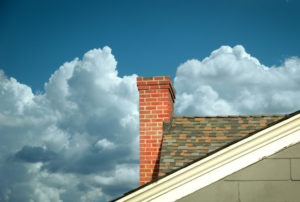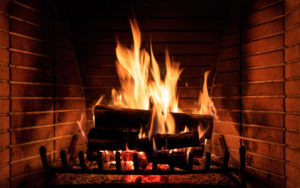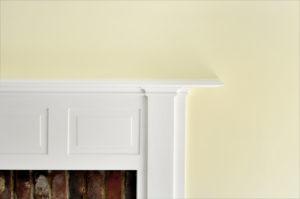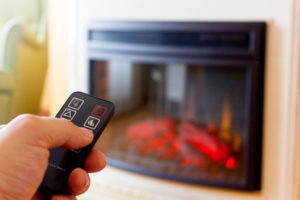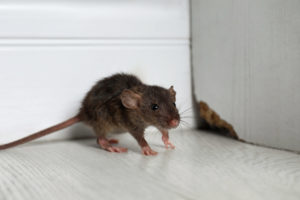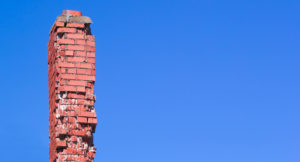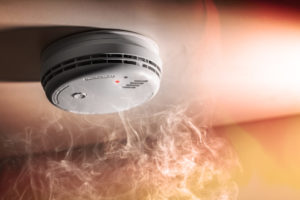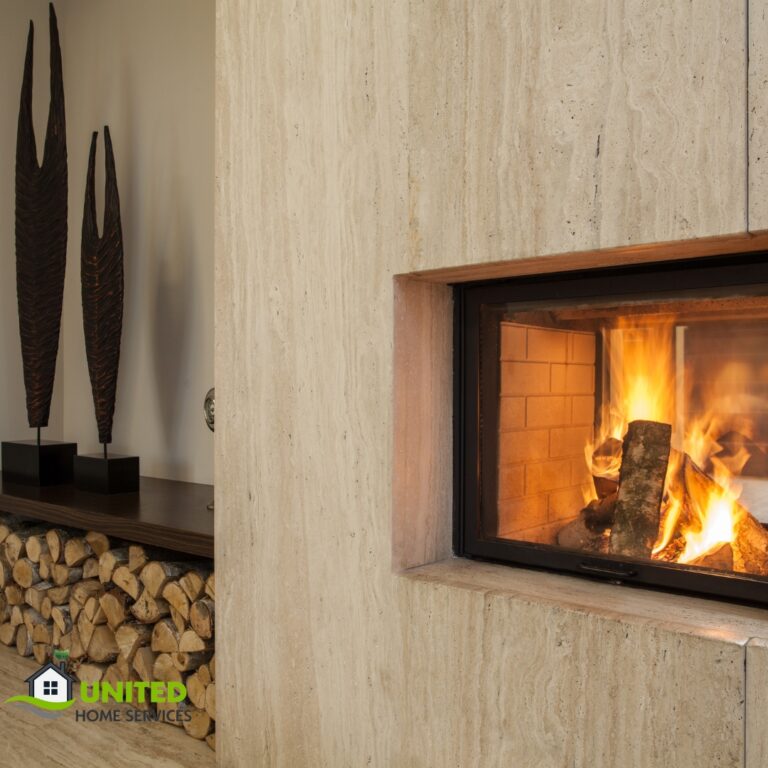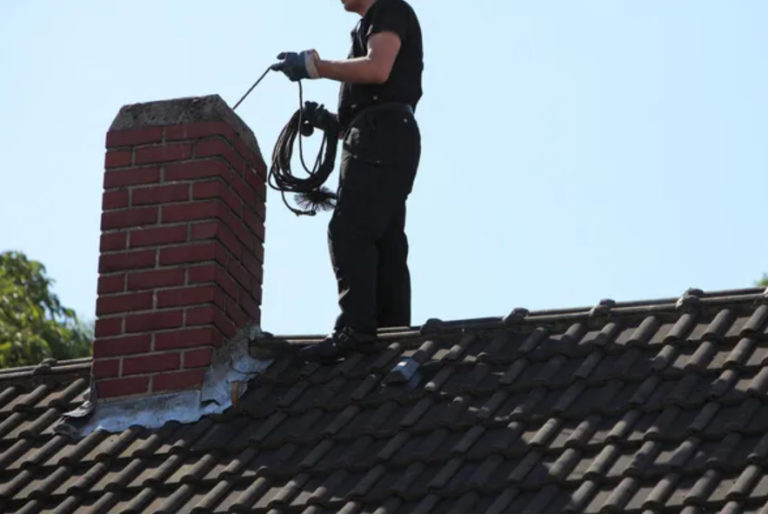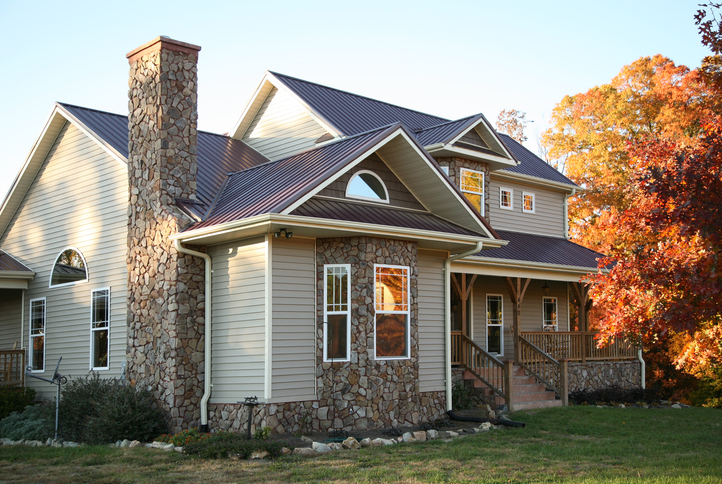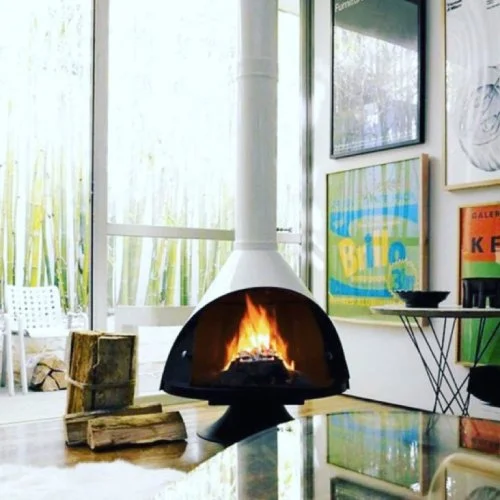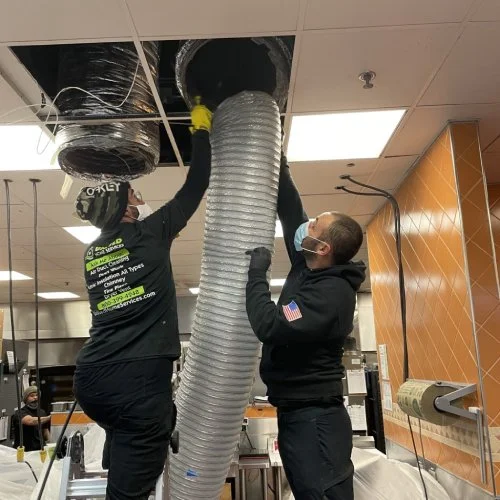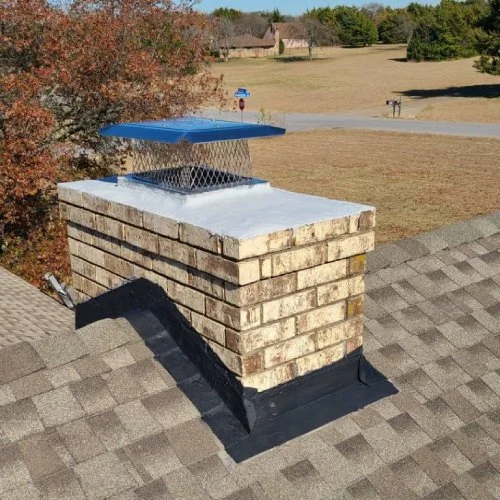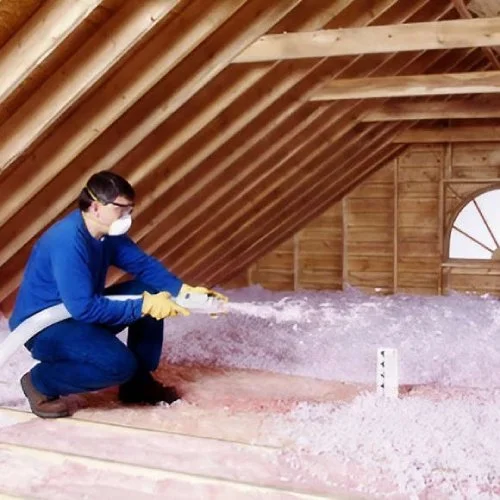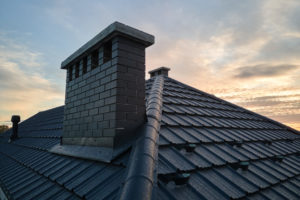
A fireplace may not be a part of everyone’s home, but for those who have one, it’s a key feature that brings the family together. That’s why taking care of fireplace and chimney cleaning is necessary. After all, there’s nothing quite like time spent in front of the fireplace in the cold months of winter.
Many homeowners aren’t aware of what goes into a fireplace. In fact, it’s more than just bricks, mortar, and a smokestack that helps your chimney function as it should. The anatomy of your chimney and fireplace consists of many components that work together to provide heat to your home.
Whether you have a gas, electric, or wood-burning fireplace, chimney safety inspections are the key to ensuring it works properly and goes the distance. Unfortunately, a fireplace that’s not well-maintained can easily catch fire and maybe a safety hazard for you and your family.
If you think it might be time for fireplace maintenance, you may want to reach out to the experts at United Home Services. Whether you require “chimney sweeping near you“, pest removal, or chimney flashing repair, we’ve got you covered!
Anatomy of Your Chimney & Fireplace
Your fireplace and chimney may seem simple, but these popular living room components are made up of many different parts. Let’s learn a bit more about them so you can ensure they are functioning properly.
The Chimney’s Exterior
- Bricks – The most obvious part of a chimney is the bricks. In order to ensure the performance and safety of your fireplace, you’ll need to have bricks that are in good condition. If yours are old and degrading, it may be time to invest in an instant chimney repair.
- Chimney Cap – As the name suggests, the chimney cap is like a ‘hat’ that sits on top of your chimney. Smoke from your fireplace moves out through this component. It functions to protect your chimney against the elements as well as any debris or animals, so you can reduce the need for chimney cleaning costs and avoid chimney fires.
- Chimney Chase Cover or Chimney Crown – Chase covers are found on the opening of a chimney for both prefabricated and factory-built chimneys. They are made from copper, steel, or aluminum. For masonry chimneys, this part is known as the chimney crown.
- Chimney Flashing – Flashing is usually made of steel, aluminum, copper, or vinyl, and has an important function for your roof. It’s placed where your chimney meets your roof to ensure that moisture cannot get into your roof or attic and lead to a significant leak.
The Chimney’s Interior
The outside of the chimney may be the most obvious part of its structure. However, what goes on the inside plays a very important part in the overall function of your fireplace.
- Chimney Flue – The flue is part of your chimney that smoke travels through to escape from your home. It’s important to invest in chimney cleaning and adequate chimney inspection at least once a year so it does not become a safety risk.
- Smoke Chamber – Located directly below the flue, the smoke chamber is the sloped area just above the fireplace. Smoke moves into this area on its way to escaping the chimney. A smoke shelf is located within this area to catch moisture or debris from the chimney top.
- Throat Damper – Also known as a fireplace damper, this is the piece of your fireplace that separates your fireplace from the chimney. It should be open for smoke removal when your fireplace is being used and closed otherwise to disable cold air, debris, or pests from entering your home.
- Chimney Liner – The liner on a chimney is generally made of aluminum, steel, or clay. The liner leads smoke out of your chimney and encases the walls of your chimney for added protection. Chimney relining will be required as this component breaks down.
The Fireplace
- Firebox – This is the most familiar part of the fireplace as it is where the fire actually sits. The firebox is set into the fireplace’s mantel and stretches into the throat damper and the smoke chamber.
- Mantel – Also known as the mantelpiece, this serves to frame the fireplace and is often ornamental in nature. The mantel shelf sits on top of the mantel and is commonly decorated with photos and household items.
- Hearth – The hearth extends out from the firebox and functions as a decorative part of the fireplace. It can be used for storing accessories for the fireplace and was traditionally used for cooking food close to the fire.
The Most Common Types of Fireplaces
If you have a fireplace in your home, it probably fits among the four following types:
Wood – When people think of fireplaces, a wood fireplace is usually what comes to mind. A wood fireplace offers the romantic fire-crackling and aroma that people have come to associate with a fire. Unfortunately, this type of fireplace releases many pollutants and is the least efficient of all the types of fireplaces.
Gas – A gas fireplace provides an energy-efficient alternative to the traditional wood fireplace. It also offers a real fire with less harmful pollutants. The only issue with gas fireplaces is that there is a risk of excess carbon monoxide. That’s why it’s so important to have functional detectors in place and make time for chimney inspection as part of your preparation for winter.
Electric – This type of fireplace is a cost-effective option that is fire-free. It uses coils and a fan in place of a flame to distribute heat. Some also have a flame to make them appear like a traditional fireplaces. The drawback to this style of fireplace is that it produces less heat than the wood or gas-burning option.
Ethanol – Because ethanol does not produce any smoke, it’s an environmentally-friendly alternative that doesn’t require ventilation. Unfortunately, like electric fireplaces, it provides less heat than wood and gas fireplaces.
The Different Types of Chimneys
- Masonry Chimney – This chimney type is made of stone, mortar, bricks, or blocks. A masonry chimney can consist of a single frame or multiple layers and requires a chimney liner for added safety.
- Prefabricated Chimney – This type of chimney can be double or triple-walled and is made of metal. It is often encased in another material to improve the aesthetic.
What Are Some Common Fireplace Issues?
There are a number of issues that can impact your fireplace and will require fireplace services. It’s important for homeowners to be aware of issues that can commonly appear with their fireplace so the problem can be remedied before it becomes a safety hazard.
- Creosote Build-up – As you use your fireplace and the smoke escapes up into your chimney, it leaves behind a dark substance. This substance is known as creosote and as it builds in your chimney, it minimizes airflow. Unfortunately, it also becomes a hazard because it can push smoke back into your home or ignite. For this reason, it’s important to reach out to a trusted chimney cleaner at least once a year.
- Pest Infestation – Whether it’s a mouse, a squirrel, or a bird, you don’t want any animals from outside running around in your fireplace or chimney. Animals can create obstructions in your chimney that increase the risk of smoke entering your home. A chimney cap is key to avoiding this issue, though you should still have your chimney inspected as these clever critters have been known to find their way in on occasion anyways.
- Closed Damper – The chimney damper is one of the most important parts of your fireplace. It not only keeps smoke out when you’re having a fire, it keeps cold out when you’re not. Your damper should be completely open until your fire has burned out entirely. A damper can get stuck due to creosote or other obstructions, which is why chimney cleaning services are an important part of routine fireplace maintenance.
What Are the Most Common Chimney Issues?
Creosote Build-up – Because your chimney is an important part of your fireplace, the build-up of creosote can cause issues with it as well. There are different types of creosote, but their presence over time is still detrimental to the safety of your home. Many home fires occur each year due to creosote build-up, so it’s important to ensure that your chimney is cleaned by a certified chimney cleaner.
Mortar Issues – The bricks may be the most prominent part of your chimney, but it’s the mortar that keeps everything together. That’s why it’s important to ensure that it’s doing its job. Mortar functions to keep the bricks securely in place and keep out moisture, so if it’s in need of replacement, it won’t be able to protect your chimney as it should. It should be removed and replaced if it’s showing signs of wear and tear.
Chimney Flue Cracks – Cracks in your chimney flue can be more difficult to diagnose than many other chimney issues. Unfortunately, this type of damage can be a big problem because the heat has the ability to escape your chimney through the cracks, it can damage materials in your home that are not heat resistant. Also, smoke and soot can travel through your home and lead to serious health hazards for your family. It’s important to have a consistent chimney cleaning service by a professional contractor to ensure your flue is functioning as it should.
Missing or Faulty Chimney Chase Covers/Chimney Crown – A chimney chase cover or chimney crown protects your home from animals, leaves, branches, and the elements. It can also become damaged over time. It’s important that it’s correctly installed and fully functioning so it can properly protect your home.
Why You Shouldn’t Put Off Fireplace and Chimney Cleaning
We’ve discussed the dangers of creosote buildup and animals entering your chimney and fireplace. However, there are a few common calamities that can befall your home if you don’t take care of your chimney.
Fires – According to the National Fire Protection Association, fireplaces and chimneys were the leading cause of three out of ten house fires in the United States between 2014 and 2018. Unfortunately, even a small fire can cause significant damage to your home. It’s essential to schedule consistent chimney cleaning service, which you’ll need to do more frequently in a high-pollution area.
Carbon Monoxide – The incidence of carbon monoxide poisoning can occur for two reasons when it comes to a fireplace. If there is creosote buildup, smoke may not be able to properly escape from your chimney. Ventilation issues with your chimney and fireplace can also lead to an issue with smoke entry. Chimney safety inspections and effective ventilation are important to ensure there are no issues with carbon monoxide in your home.
Exposure to Toxins – Beyond carbon monoxide, a chimney that isn’t cleaned over time can release other toxins into your home. As substances build up, burning them can cause serious health issues for your family. Timely chimney and fireplace maintenance should not be put off for more than a year for this reason.
We’re Experts in Fireplace & Chimney Care!
If you have a chimney and fireplace, you probably consider it to be one of the most rewarding parts of your home on those chilly winter evenings. There’s nothing like having the family settle in the living room around the glowing hearth on a cold winter’s night.
That’s why understanding what goes into your fireplace and what the common issues are is so important. By being aware of how to take care of your fireplace and chimney, you can make them last and keep them operating safely. It will also ensure that there are no damages to your family or home due to problem parts or missed inspections.
Are you in need of help from a trusted chimney cleaning company? The professionals at United Home Services are happy to help. We have locations across the country, so check out the one nearest to you to find out more about how we can get your fireplace and chimney ready for the burning season!
- Chimney Sweep in Addison, TX
- Chimney Sweep in Allen, TX
- Chimney Sweep in Anna, TX
- Chimney Sweep in Arlington, TX
- Chimney Sweep in Balch Springs, TX
- Chimney Sweep in Bedford, TX
- Chimney Sweep in Benbrook, TX
- Chimney Sweep in Blue Mound, TX
- Chimney Sweep in Blue Ridge, TX
- Chimney Sweep in Carrollton, TX
- Chimney Sweep in Cedar Hill, TX
- Chimney Sweep in Colleyville, TX
- Chimney Sweep in Copeville, TX
- Chimney Sweep in Coppell, TX
- Chimney Sweep in Crowley, TX
- Chimney Sweep in Dallas, TX
- Chimney Sweep in Dalworthington Gardens, TX
- Chimney Sweep in DeSoto, TX
- Chimney Sweep in Duncanville, TX
- Chimney Sweep in Euless, TX
- Chimney Sweep in Everman, TX
- Chimney Sweep in Fairview, TX
- Chimney Sweep in Farmers Branch, TX
- Chimney Sweep in Farmersville, TX
- Chimney Sweep in Forest Hill, TX
- Chimney Sweep in Fort Worth, TX
- Chimney Sweep in Frisco, TX
- Chimney Sweep in Garland, TX
- Chimney Sweep in Glenn Heights, TX
- Chimney Sweep in Grand Prairie, TX
- Chimney Sweep in Grapevine, TX
- Chimney Sweep in Haltom City, TX
- Chimney Sweep in Haslet, TX
- Chimney Sweep in Hurst, TX
- Chimney Sweep in Hutchins, TX
- Chimney Sweep in Irving, TX
- Chimney Sweep in Josephine, TX
- Chimney Sweep in Justin, TX
- Chimney Sweep in Keller, TX
- Chimney Sweep in Kennedale, TX
- Chimney Sweep in Lancaster, TX
- Chimney Sweep in Mansfield, TX
- Chimney Sweep in McKinney, TX
- Chimney Sweep in Melissa, TX
- Chimney Sweep in Mesquite, TX
- Chimney Sweep in Murphy, TX
- Chimney Sweep in North Richland Hills, TX
- Chimney Sweep in Plano, TX
- Chimney Sweep in Princeton, TX
- Chimney Sweep in Prosper, TX
- Chimney Sweep in Red Oak, TX
- Chimney Sweep in Rendon, TX
- Chimney Sweep in Richardson, TX
- Chimney Sweep in Rowlett, TX
- Chimney Sweep in Sachse, TX
- Chimney Sweep in Saginaw, TX
- Chimney Sweep in Southlake, TX
- Chimney Sweep in University Park, TX
- Chimney Sweep in Watauga, TX
- Chimney Sweep in White Settlement, TX
- Chimney Sweep in Wylie, TX

